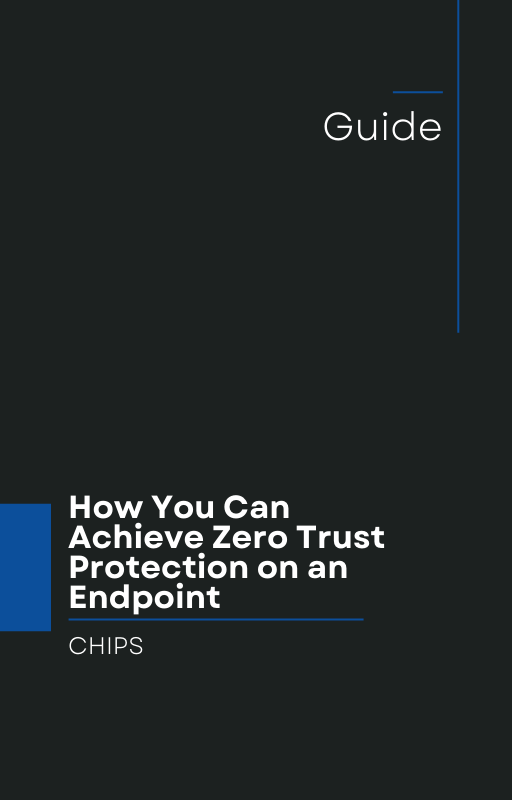Late in 2025, Jaguar Land Rover (JLR) announced that a ransomware attack had “severely disrupted” both its retail and production operations. The company stated it “took immediate action to mitigate its impact by proactively shutting down” systems, and is working to restore systems “in a controlled manner.” Fox Business
Notably, JLR reported that as of now there is no confirmed customer data breach — but the operational toll underscores how deeply disruptive modern cyberattacks can be.
This incident underscores an unsettling reality: even well-resourced organizations can fall victim to ransomware or other attacks. And once attackers gain a foothold, the damage is not just about data exfiltration — it’s about system downtime, process paralysis, reputational damage, and cascading costs.
In light of this, it’s time for business leaders to rethink their cyber-defense posture. The prevailing paradigm—Detect & Respond—simply is no longer sufficient. Instead, forward-looking organizations must adopt Isolation & Containment as a proactive, resilient approach to endpoint protection. And when it comes to commercially available solutions with a proven track record, AppGuard leads the way.
Why “Detect & Respond” is No Longer Enough
1. Detection is always reactive
Traditional security tools aim to detect malicious activity—zero-day exploit attempts, unusual file modifications, outbound command-and-control communications—and then respond (quarantine, block, alert). But detection is inherently reactive. Attackers often move quickly, sometimes completing lateral movement, privilege escalation, and payload deployment before detection triggers.
2. Response is costly and uncertain
Once an attack is underway, responding means manual investigation, cutting off compromised segments, rebuilding systems, restoring data, and sometimes paying ransom or negotiating. That entire process is costly, time-consuming, and risky. Even if you successfully respond, damage may already be done.
3. Attackers are evolving aggressively
Ransomware operators and advanced persistent threat (APT) groups are constantly refining tactics to evade detection. Fileless malware, living-off-the-land techniques, memory-based attacks, and zero-day exploits make it harder for detection systems to reliably catch everything.
4. Business disruption is now the primary threat
As JLR experienced, it’s not just stolen data — a cyberattack can bring operations to a grinding halt. A days- or weeks-long outage can cost millions, disrupt global supply chains, upset customers, and tarnish brand reputation.
The Power of Isolation & Containment
Isolation & Containment flips the equation. Rather than waiting to detect a breach and then respond, this model assumes that threats will try to land on endpoints, and builds containment walls around every process. Trust is minimized, privilege is tightly controlled, and any unpermitted behavior is blocked immediately—not merely flagged.
Key advantages:
-
Prevention over reaction. Malicious code, even if unknown or novel, is prevented from harming the system because it cannot break out of its constrained environment.
-
Reduced dwell time. Since attack behavior is contained immediately, threats cannot spread laterally or escalate privileges.
-
Independent of signatures or behavior heuristics. Isolation is not reliant on knowing a threat pattern ahead of time.
-
Operational continuity. Even if malware lands, business processes stay intact because the threat is instantly neutralized.
In the same way a fire compartment in a building prevents blaze spread, isolation zones around each endpoint process prevent cascading damage.
Why Business Should Choose AppGuard
If you're seeking commercial solutions that embody this advanced posture, AppGuard stands out. Here’s why businesses should seriously consider adopting it:
-
Proven track record
For over 10 years, AppGuard has been protecting high-security environments—defense, intelligence, critical infrastructure—against sophisticated threats. Its isolation and containment approach isn’t theoretical; it’s battle-tested. -
Minimal performance burden
Because AppGuard uses containment rather than heavy heuristic scanning or constant signature updates, it imposes very low overhead. Users don’t suffer slowdowns or intrusive alerts. -
Compatibility with existing security stack
AppGuard can complement existing tools—EDR, SIEM, firewalls—adding a critical prevention layer that stops threats before detection or response is needed. -
No reliance on threat intelligence alone
Many defenses break down when facing novel or zero-day attacks. AppGuard’s containment model is agnostic to threat signature or behavior, so it remains effective even against unknown attacks. -
Scalability for business environments
The solution is now available for broader commercial deployment, not just classified or high-security installations. Its architecture supports large-scale, enterprise-grade use.
What JLR’s Incident Teaches Us — And What Could Have Been Avoided
Imagine if JLR had deployed endpoint isolation and containment across its global workstations, production systems, and remote access points. The ransomware payload, upon landing, would have been instantly contained, unable to execute or spread. JLR wouldn’t have had to power down systems to quarantine infections; operations would have stayed online. Recovery would involve cleaning isolated units rather than sweeping remediation or evacuation of infrastructure.
Instead, in the detect-and-respond model, the attacker’s path is only stopped after detection—by which point damage and disruption are largely baked in. JLR’s decision to shut down systems reflects just how desperate organizations become once detection is too late.
Taking the Next Step: Move Beyond Detect & Respond
If you are a business owner or CISO looking at your cybersecurity posture today, ask yourself:
-
Are we assuming detection is sufficient—or do we design for containment by default?
-
How long would an attack take to spread across our environment?
-
What would downtime cost us—not in dollars only, but in customer trust?
-
Do we have a preventive layer that actually stops malware execution, not just flags it?
AppGuard is the solution that brings that preventive, containment-first approach into your security stack. For over a decade it has stood guard in high-stakes environments. Now, business organizations can benefit from the same proven technology.
Call to Action
Don’t wait until your business is the next automaker in the headlines. Talk with CHIPS today about how AppGuard can avert a disruptive cyber incident before it gets started. Let’s shift your strategy from “Detect & Respond” to “Isolation & Containment” — and stop threats at the door. Reach out now to schedule a consultation and safeguard your enterprise’s next decade.
Like this article? Please share it with others!

October 1, 2025

Comments